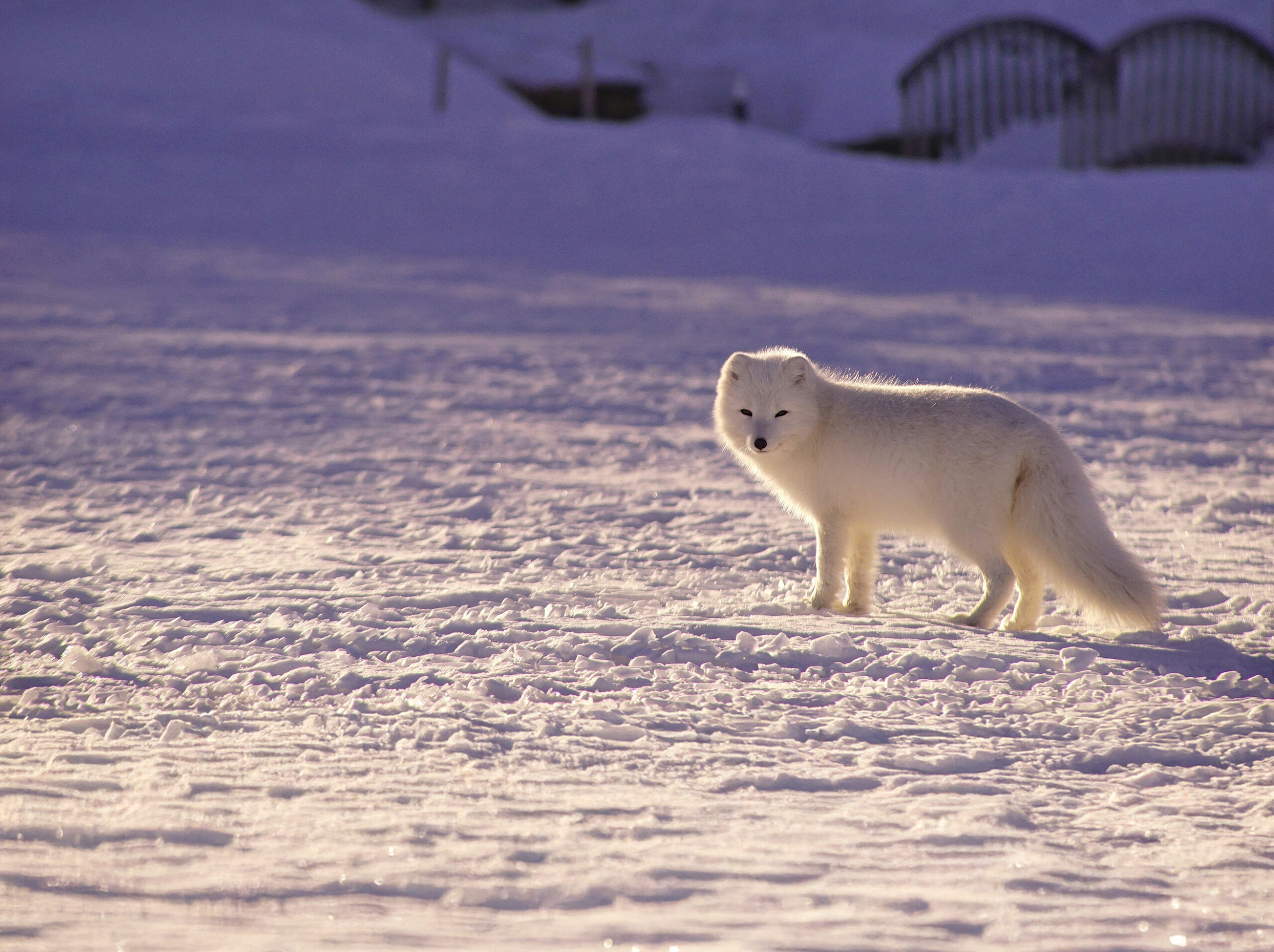
The Arctic fox (Vulpes lagopus), also called the polar or snow fox, is a hardy species native to the Arctic tundra. It plays a vital role in this frozen landscape but is facing multiple threats due to climate change. Here are eight interesting facts about arctic foxes and the challenges they face in one of the coldest places on the planet.
The Arctic fox is the only native land mammal in Iceland
Arctic foxes mostly live in the tundra and coastal areas, but they can also be spotted on sea ice close to the North Pole and as high up as 3,000 metres. What’s truly fascinating is their remarkable adaptability. These foxes can roam across the vast Arctic tundra in Europe, Asia, North America, Greenland, and Iceland, where it is the only native land mammal.
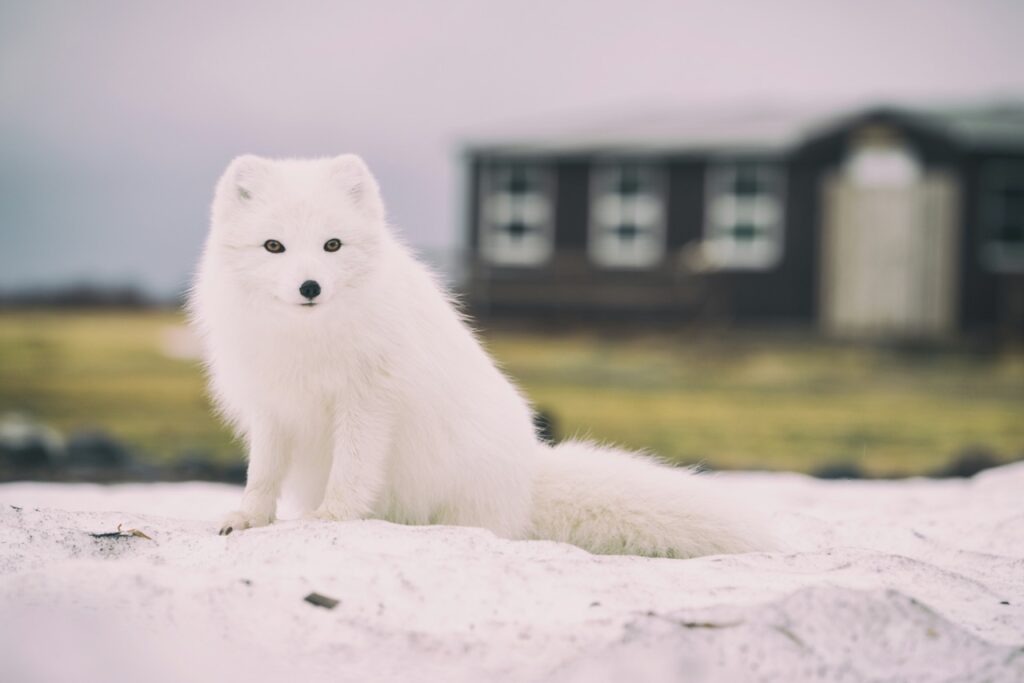
Although these foxes are globally listed as ‘Least Concern’ by the IUCN, local populations, particularly in Scandinavia, are showing regional decline.
They’re experts at surviving in the freezing cold
The Arctic fox is highly equipped to live in cold, icy habitats, thanks to its thick fur coat and bushy tail that doubles as a warm blanket. It also has a round and compact body shape with short legs and small ears that helps reduce heat loss.
The fur of the Arctic fox changes colour with the changing seasons
Arctic foxes usually go through ‘seasonal moulting’, shedding their thick white winter coats for thinner ones in the spring. The colour of this thinner fur can be charcoal, dark grey, blue or brownish with reddish tones. This helps the arctic fox to blend with its surroundings as temperatures rise and snow starts to melt.
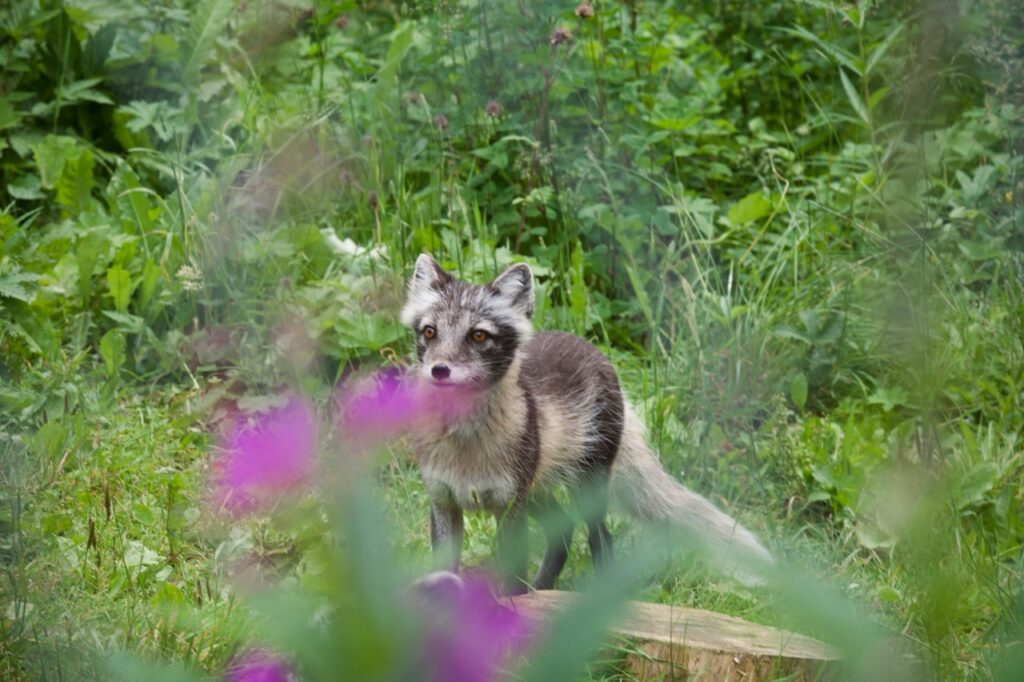
Interestingly, not all Arctic foxes swap their fur coats. Some keep their dark coats throughout the year, only slightly changing in shade and thickness.
Arctic foxes have a unique hunting style called snow ambushing
Arctic foxes mostly hunt lemmings and voles living beneath the snow. For this, they’ve got a nifty hunting trick called snow ambushing or mousing. First, they pick up on tiny rustles under the snow using their sharp hearing. Once they pinpoint their prey, they leap up and dive headfirst into the snow to catch their meal.
While snow ambushing is a key survival tactic in winter, Arctic foxes are also opportunistic feeders. They’ll eat just about anything edible, like birds, fish, insects, berries, reptiles, and other small critters.
They hoard food under rocks or snow when it is abundant
Arctic foxes often stash extra food under rocks, in crevices, or by burying it in snow. This clever tactic allows them to prepare for leaner times when food becomes scarce. Isn’t that a smart investment?.
Arctic foxes often follow polar bears to scavenge on their leftovers
During winter, Arctic foxes may travel vast distances across sea ice to follow polar bears and scavenge on their leftovers. Polar bears primarily feast on the fatty blubber of seals, leaving behind seal remains that Arctic foxes can eat.
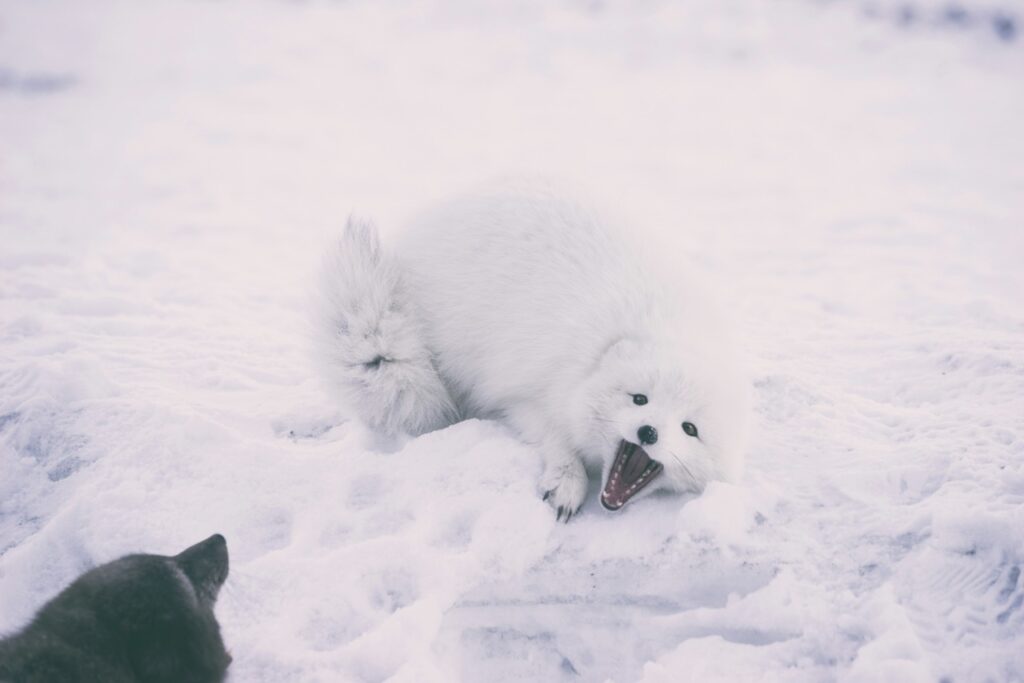
They are key to maintaining the health and balance of tundra ecosystems
These snow-loving foxes are ‘keystone species’, vital for keeping things together and functioning in the cold Arctic environments. They keep lemming populations in check and distribute essential nutrients like nitrogen and phosphorus by leaving droppings and digging dens. This encourages plant life in the nutrient-poor tundra soils, which then attracts herbivores.
If Arctic foxes were to disappear, it’d kickstart a chain of serious ripple effects that could upset and possibly topple the delicate balance of tundra ecosystems.
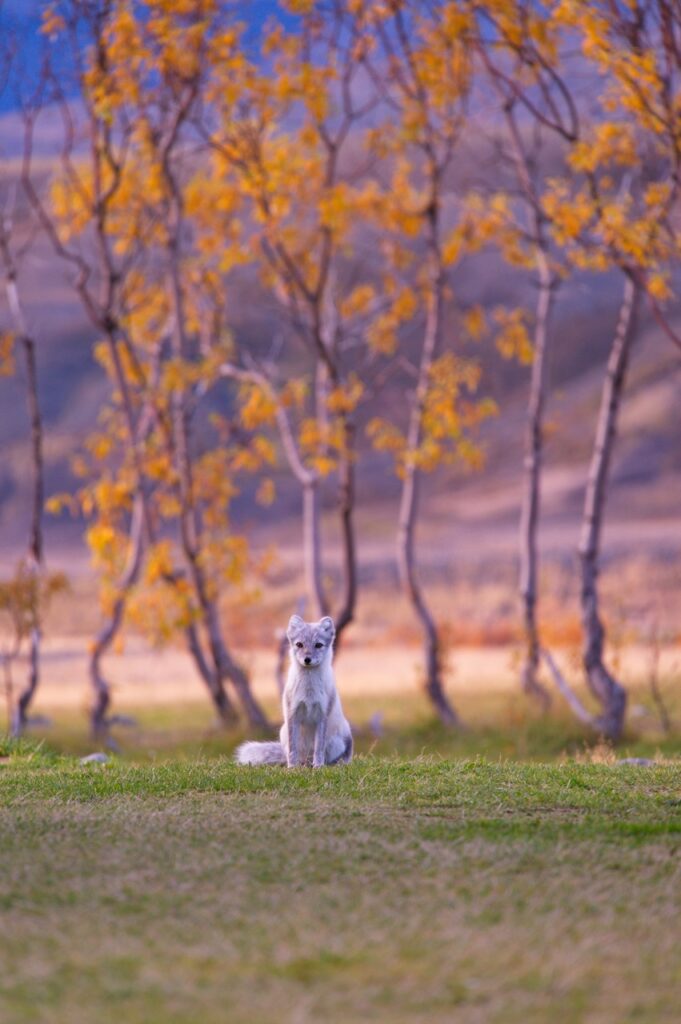
The Arctic is rapidly warming, and that’s bad news for Arctic foxes
The Arctic is warming four times faster than the global average. This rapid change is leading to less snow cover and more sea ice loss, making it tougher for polar foxes to find food and shelter.
As it gets warmer, larger red foxes are making their way into the Arctic tundra. With their bigger, stronger build, they can easily outcompete smaller Arctic foxes by taking over food sources and dens. In some areas, snow foxes have been moving even further north in search of food and a safe place to call home.
What can we do?
We need to take swift action to stop climate change and habitat loss in the Arctic regions. By doing so, we can protect the delicate balance of this unique ecosystem and ensure the survival of the Arctic fox.
